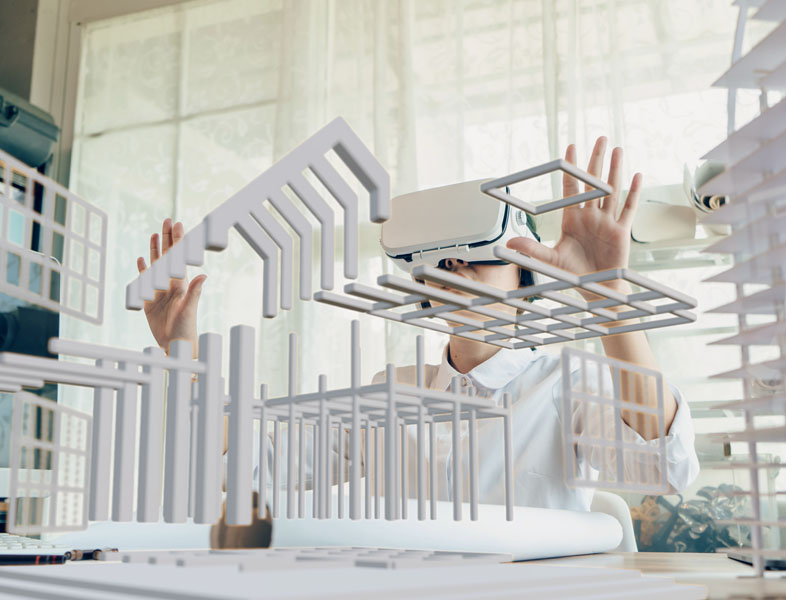The global hunger for new construction and infrastructure is unceasing, with global construction output predicted to grow by 42 percent by 2030 and North American output expected to grow 32 percent over the same time frame.
Ongoing construction labor shortages in Canada and the U.S., along with ever-rising construction costs across the board, have exacerbated the need for projects to become more efficient to meet these demands.
Enter new technologies – specifically, artificial intelligence (AI), machine learning (ML), and data analytics – in construction. Here are three ways companies are using AI and data analytics in construction to improve outcomes.
How is AI Used in Construction?
Even though a large chunk of the public holds a healthy skepticism about AI and its potential to eliminate jobs, the fact is that AI can help improve the effectiveness of construction firms without removing people from the workforce.
That’s because AI, ML, and data analytics can analyze massive amounts of unstructured data, such as text documents and images, through natural language processing (NLP) and computer vision (CV) to glean insights that would take months for a human to accomplish. Machine learning is an overarching type of AI that learns from data.
Construction companies can use this technology to forecast customer demand, analyze and improve worker productivity, or improve overall revenue through greater efficiencies.
Indeed, Deloitte estimates that data analytics and AI tools can save firms as much as 15 percent of their total construction costs.
Here are a few of the main ways these technologies can help construction firms.
Automation
Documents from previous projects, commodity prices, and other internal and external data can feed AI models to derive insights and automate repetitive tasks across the project lifecycle.
AI-powered project management software for construction, for example, can auto-detect title blocks and sheet names, helping to scale the drawing categorization process for virtual design and construction (VDC) workers.
Autonomous vehicle technology on jobsites has become more common in recent years, especially in the mining industry. Although large-scale adoption of self-driving construction machinery has proven elusive – at least so far – innovations such as the Hadrian X auto-bricklaying robot have shown plenty of promise. Remote diagnostics and other internet of things (IoT) tools accompanying automated construction vehicles also help keep vehicles in action longer through predictive maintenance.
Pre-Construction
In the pre-construction phase, AI can examine and parse building codes for important information, analyze project plans, and spot potential issues much faster than humans.
AI and data analytics can improve the efficiency of the design, bidding, and financing processes, which are traditionally prone to inaccurate cost estimates or unrealistic timelines. Construction firms can use AI to review and optimize layout designs, ensuring Building Information Modeling (BIM) outputs from the architecture, engineering, mechanical, electrical, and plumbing teams don’t clash with one another.
In one example of AI-assisted design for construction, Autodesk teamed up with Daisy AI to automate timber floor layout optimization in mass timber buildings.
AI can also provide real-time commodity price insights when negotiating with suppliers, allowing salespeople to hit the right bid price at the right time. It can conduct project post-mortem analysis or assess project viability and potential risks.
Deloitte says AI in pre-construction can help reduce budgets and timeline issues by 10 to 20 percent and engineering hours by up to 30 percent.
Jobsite Safety and Risk Mitigation
Year after year construction work ranks as one of the most dangerous trades, with construction workers killed on the job five times more often than other laborers. That’s why one of the most important ways AI helps construction firms is by ensuring jobsite safety.
AI tools can automatically examine images and detect potential safety hazards or issues with construction processes, or use data generated from wearables used by workers to guard against unforeseen events using predictive analytics. One Boston-area company uses AI to scan jobsite photos for potential safety hazards or unsafe practices, such as workers not using safety equipment properly, allowing it to assess risk at each jobsite and alert stakeholders when threats are detected.
Challenges With Implementing AI in Construction
Despite the advantages AI and data analytics can provide to construction firms, large-scale adoption of the technology still faces an uphill climb. Each construction project is unique, after all, which can present major challenges when attempting to automate processes.
Additionally, most construction firms have traditionally relied on non-digitized processes and paper documentation, which can make data availability for AI models a challenge. And the decentralized nature of most construction projects means technology deployments and use can be wildly different from job to job.
Deloitte says companies hoping to move beyond pilot projects and operationalize AI can overcome these challenges by:
- Developing a data strategy based on value generation to support the choice of specific tools and applications
- Finding and identifying areas of relevant and actionable data within the company that AI tools can leverage
- Taking a “bottom-up” approach by selecting and developing new technology based on front-line requirements, not executive preferences
- Ensuring management buy-in when deploying new technologies through a strong business case
The Future of AI in Construction
While the full-scale deployment of AI and data analytics in construction is still a few years away, we’ve already seen serious inroads made through robotics and IoT devices, improved safety, and other applications of AI in construction.
And while some have predicted the loss of construction jobs due to technology, what’s more likely in the face of soaring demand is that AI and data analytics will help scale the effectiveness of human workers and their companies – helping to improve margins, making jobsites safer, and reducing expensive mistakes.
News and Updates
The latest from Unicel Architectural

Unicel Architectural Adds Security Hardware Channel Sales Leader
Company News - Company, News & Events



